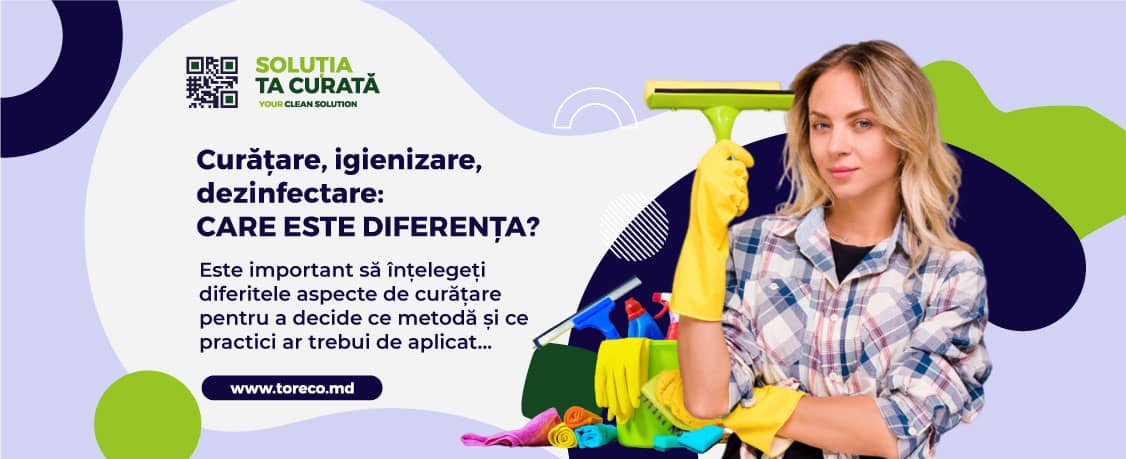
An essential part of running a successful business is maintaining a clean environment.
It’s important to understand the different depths of cleaning to decide what method and practices you should take in your location to slow the spread of diseases and viruses.
We’ll be exploring the differences between cleaning, sanitizing, disinfecting, and sterilizing so that you can best incorporate them in your janitorial regimen.
The main difference between cleaning and sanitizing is that cleaning is the act of clearing debris and deposits on a surface, while sanitizing involves killing bacteria after the surface has already been cleared or wiped off.
When comparing cleaning vs sanitizing, you’ll want to make sure that cleaning happens first regardless of the surface, and that sanitizing follows depending on the area. Items that come into contact with foods and that are often touched should be sanitized, while locations like hallway floors and windows do not need to be regularly sanitized as they are considered low-risk surfaces.
To clean something means to remove all of the visible contaminations on the surface, including dirt, spills, food particles, dust, etc., by washing, brushing, or wiping the area. This process is surface level and does not eliminate germs but can help reduce their numbers. This is expected to be the first step in the cleansing process. Common cleaning products include:
Sanitizing means to reduce the amount of microorganisms like bacteria, viruses, and fungi on a surface after it has been cleaned. The sanitizer used must reduce the number of bacteria to the level that is deemed safe by the public health standards. To meet CDC requirements, sanitizing chemicals must kill 99.999% of the test bacteria in under 30 seconds.
Although sanitizing reduces the growth of harmful bacteria, it does not kill all of the viruses on a surface. Sanitizing is meant to be used as a preventative measure and is an extremely important practice in restaurants, schools, corporate offices, and hospitals. Every surface that comes into contact with food should be sanitized regularly, often several times a day.
The difference between sanitizing and disinfecting is based on the amount of bacteria each process eliminates. While sanitizing is meant to kill the majority of germs, it cannot make antiviral claims. Disinfecting is more potent than sanitizing and can kill nearly 100% of bacteria, viruses, and fungi while targeting specific disease-carrying microorganisms like the flu virus, norovirus, and coronavirus.
To disinfect means to kill specific viruses and pathogens on a surface using a disinfectant. These cleaning agents must kill 99.999% of infectious bacteria, viruses, and fungi within a 5-10minute period. It is recommended to disinfect frequently touched surfaces. Bathrooms should always be disinfected due to the pathogens those surfaces can harbor that can lead to the spread of disease. Common disinfectants include:
Although the terms are used interchangeably, there are differences between disinfecting and sterilizing. Disinfecting eliminates nearly 100% of viruses and bacteria on surfaces, while sterilizing will kill all of the viruses, bacteria, fungi, and bacterial spores on an item.
While disinfecting is useful in most settings and on regularly touched surfaces, sterilizing is usually just reserved for instruments used in medical facilities and hospital settings.
Healthcare facilities are highly dependent on the sterilization of foods, medicines, and equipment to prevent infections in wounds and the spread of diseases from patient to patient. A few methods can be used to sterilize products:
When comparing the different cleansing practices, the number of bacteria will decrease as you progress from cleaning to disinfecting, to finally being fully eradicated with sterilizing.
Practical information from our experience is the best tool to help you find the solution to the challenges you are facing.